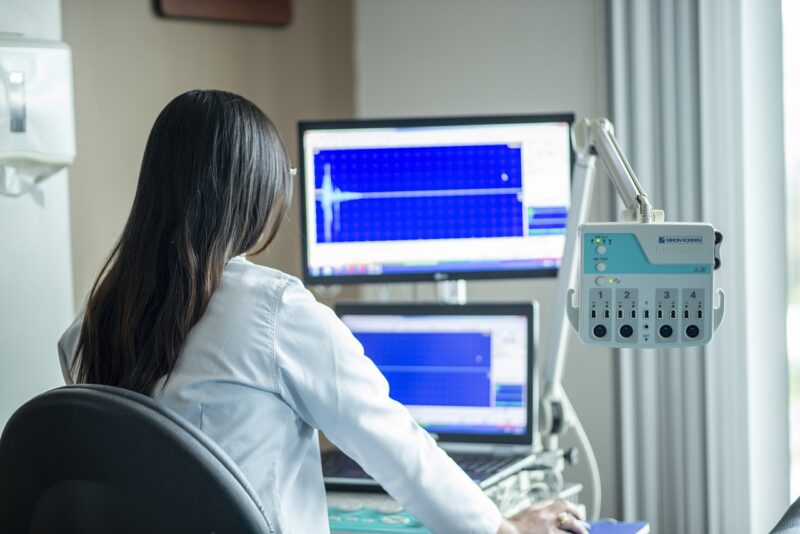The Fascination with Collecting Vintage Medical Equipment
November 13, 2024

Collecting vintage medical equipment is a unique and intriguing hobby that blends history, aesthetics, and a passion for medicine. For many collectors, these artifacts represent not just the evolution of healthcare, but also the stories of the people who used them—from pioneering doctors to patients who underwent treatment.
1. A Brief History of Medical Equipment
The history of medical equipment traces back thousands of years, with each era showcasing different tools and methodologies. From ancient Egyptian surgical instruments, made of bronze, to the invention of the stethoscope by René Laennec in 1816, each piece tells a story of human innovation and the persistent quest for improved health.
The 19th and early 20th centuries marked a transformative period in medical technology, bringing about inventions such as the X-ray machine, the electrocardiogram (ECG), and increasingly sophisticated surgical instruments. Collectors often focus on these seminal innovations, as they not only represent advancements in medicine but also evoke a sense of nostalgia.
2. Why Collect Vintage Medical Equipment?
Collectors of vintage medical equipment are drawn to their passion for history, aesthetics, and the stories behind these instruments. Here are a few reasons why this hobby captivates many:
- Historical Significance: Each piece is a testament to advancements in medical practices and technologies. Collectors enjoy uncovering the history behind these artifacts, understanding how they influenced patient care, and charting the evolution of medical science over the decades.
- Artistry and Design: Some vintage medical tools are beautifully crafted and showcase the artistry of their time. Whether it’s the intricate brass work of early surgical instruments or the elegant design of old apothecary bottles, collectors appreciate the aesthetic qualities that make these items visually striking.
- Connection to Medicine: For those working in or interested in healthcare, collecting vintage medical equipment may serve as a bridge to the past. It offers a tangible connection to the medical profession’s history and its impact on society.
- Preservation of Knowledge: By collecting and displaying these items, enthusiasts help preserve not only the artifacts but also the stories and knowledge that accompany them. This stewardship ensures that future generations can learn from and appreciate these pieces of history.
3. The Art of Collecting
Collecting vintage medical equipment requires enthusiasm, research, and sometimes significant investments of time and money. Here are some key considerations for those interested in starting their own collection:
- Research: Familiarize yourself with various types of medical equipment, their historical contexts, and market values. Knowledge about authenticity, materials, and the provenance of pieces is vital for collectors to avoid counterfeit items and to appreciate their true worth.
- Networking: Connect with fellow collectors and enthusiasts through online forums and social media groups. Building relationships with other collectors can lead to valuable insights and opportunities to acquire unique pieces.
- Attending Shows and Auctions: Medical antiques shows, estate sales, and auctions are prime hunting grounds for collectors. Attending these events provides opportunities to see items up close, understand their condition, and negotiate prices with sellers.
- Care and Display: Proper care and displaying of your collection are essential. Many collectors use display cases or shadow boxes to protect their artifacts while ensuring they remain aesthetically pleasing. Regular maintenance is also vital to preserve the integrity of vintage items.
4. Notable Areas of Interest
Within the realm of vintage medical equipment, numerous specialties and categories are particularly popular among collectors:
- Surgical Instruments: Collectors often seek antique surgical tools, such as scalpels, forceps, and amputation saws. These instruments vary widely in craftsmanship and can provide insight into historical surgical practices.
- Anesthesia Equipment: Vintage anesthesia machines and related tools recount the evolution of anesthesia and patient care during surgeries, making them appealing for collectors interested in operating theater history.
- Dental Instruments: Collectors may focus on dental practices, accumulating items like early dental chairs, tools, and dental practice manuals.
- Pharmaceutical Artifacts: This category comprises apothecary jars, old labels, and even vintage packaging for medicinal products, celebrating the close relationship between pharmacy and healthcare evolution.
- Bloodletting and Electroconvulsive Therapy Equipment: Items related to historical medical practices can also evoke curiosity, especially those that demonstrate how far medicine has advanced in understanding patient care and treatment efficacy.
5. Ethical Considerations in Collecting
As with any form of collecting, ethical considerations must be taken into account when acquiring vintage medical equipment:
- Provenance: It’s crucial to ensure that items were not obtained through unethical means. Understanding where an artifact comes from, its previous ownership, and any historical significance can foster responsible collecting.
- Cultural Sensitivity: Some artifacts may hold significant cultural or historical importance. Collectors should approach these with respect and awareness, ensuring that the items do not exploit or misrepresent their origins or meanings.
- Respect for Medical Practices: Collectors should acknowledge and respect the evolution of medical practices and understand that the items in their collections can often reflect the harmful practices of the past. Contextualization can play a key role in educating others on both the artifact and the profession’s growth.
6. The Future of Collecting Vintage Medical Equipment
The landscape of collecting vintage medical equipment seems to be thriving as more people recognize the rich histories behind these items. As interest in healthcare history grows, online marketplaces and auctions will likely become even more popular avenues for collectors to acquire unique pieces. Many collectors also engage in discussions via social media, sharing their collections and insights with a broader community. Online forums and collector groups continue to grow, providing support and shared knowledge.
As technology advances and healthcare continues to evolve, vintage medical equipment will always be a poignant reminder of the journey our society has taken toward better health care. Whether for personal enjoyment, educational purposes, or simply to preserve history, the fascination with collecting vintage medical equipment is likely to endure, captivating future generations of collectors and historians alike.
Conclusion
The love of collecting vintage medical equipment offers a unique lens through which we can explore the history and evolution of medicine. Each piece not only encapsulates the science and artistry of its time but also connects us to the lives and stories of those who used it. As collectors continue to share their passion, the stories behind these artifacts will not just be preserved but will also inspire and educate future generations about the transformative power of medicine throughout history.








